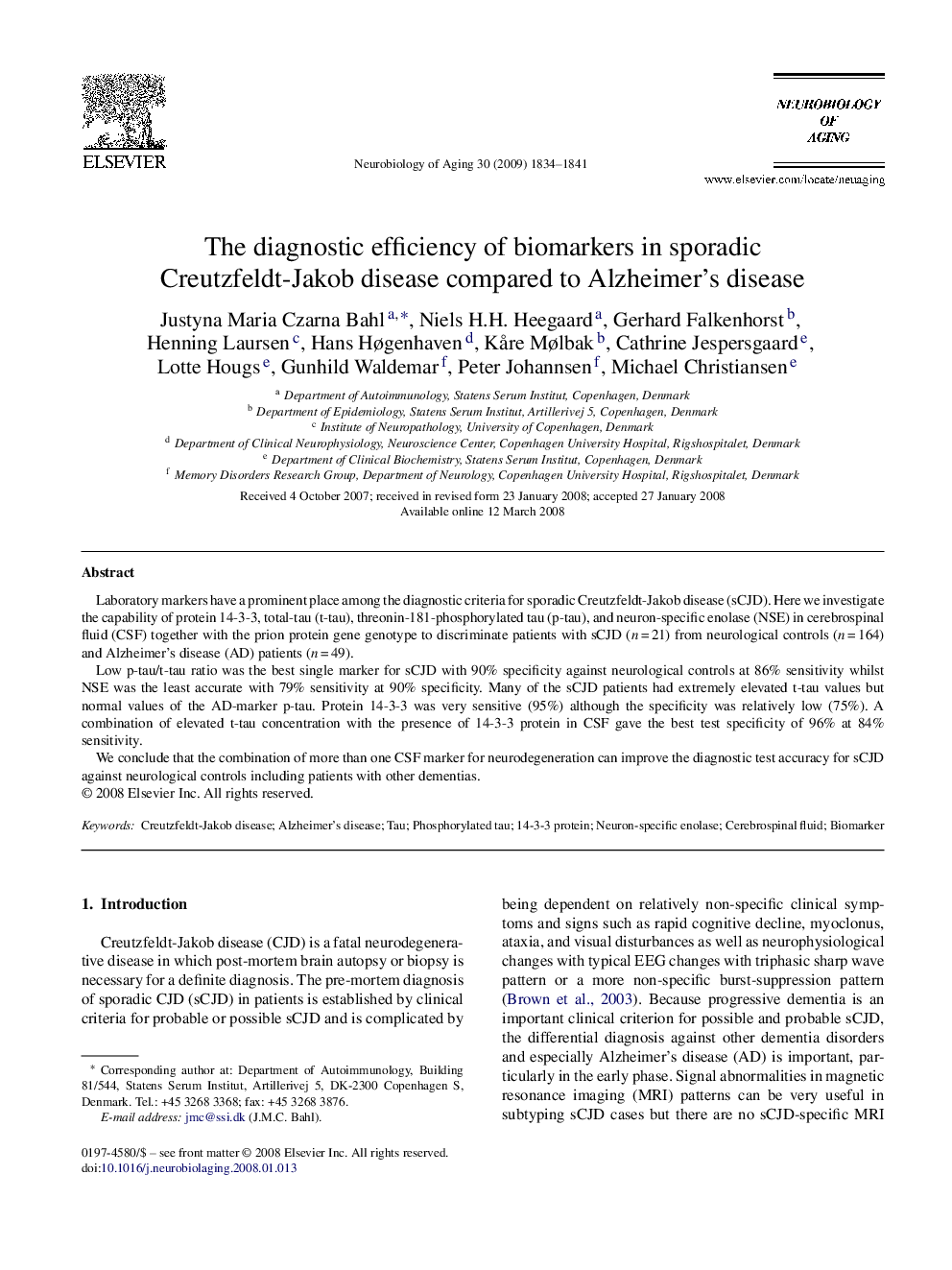| کد مقاله | کد نشریه | سال انتشار | مقاله انگلیسی | نسخه تمام متن |
|---|---|---|---|---|
| 329448 | 1433628 | 2009 | 8 صفحه PDF | دانلود رایگان |

Laboratory markers have a prominent place among the diagnostic criteria for sporadic Creutzfeldt-Jakob disease (sCJD). Here we investigate the capability of protein 14-3-3, total-tau (t-tau), threonin-181-phosphorylated tau (p-tau), and neuron-specific enolase (NSE) in cerebrospinal fluid (CSF) together with the prion protein gene genotype to discriminate patients with sCJD (n = 21) from neurological controls (n = 164) and Alzheimer's disease (AD) patients (n = 49).Low p-tau/t-tau ratio was the best single marker for sCJD with 90% specificity against neurological controls at 86% sensitivity whilst NSE was the least accurate with 79% sensitivity at 90% specificity. Many of the sCJD patients had extremely elevated t-tau values but normal values of the AD-marker p-tau. Protein 14-3-3 was very sensitive (95%) although the specificity was relatively low (75%). A combination of elevated t-tau concentration with the presence of 14-3-3 protein in CSF gave the best test specificity of 96% at 84% sensitivity.We conclude that the combination of more than one CSF marker for neurodegeneration can improve the diagnostic test accuracy for sCJD against neurological controls including patients with other dementias.
Journal: Neurobiology of Aging - Volume 30, Issue 11, November 2009, Pages 1834–1841